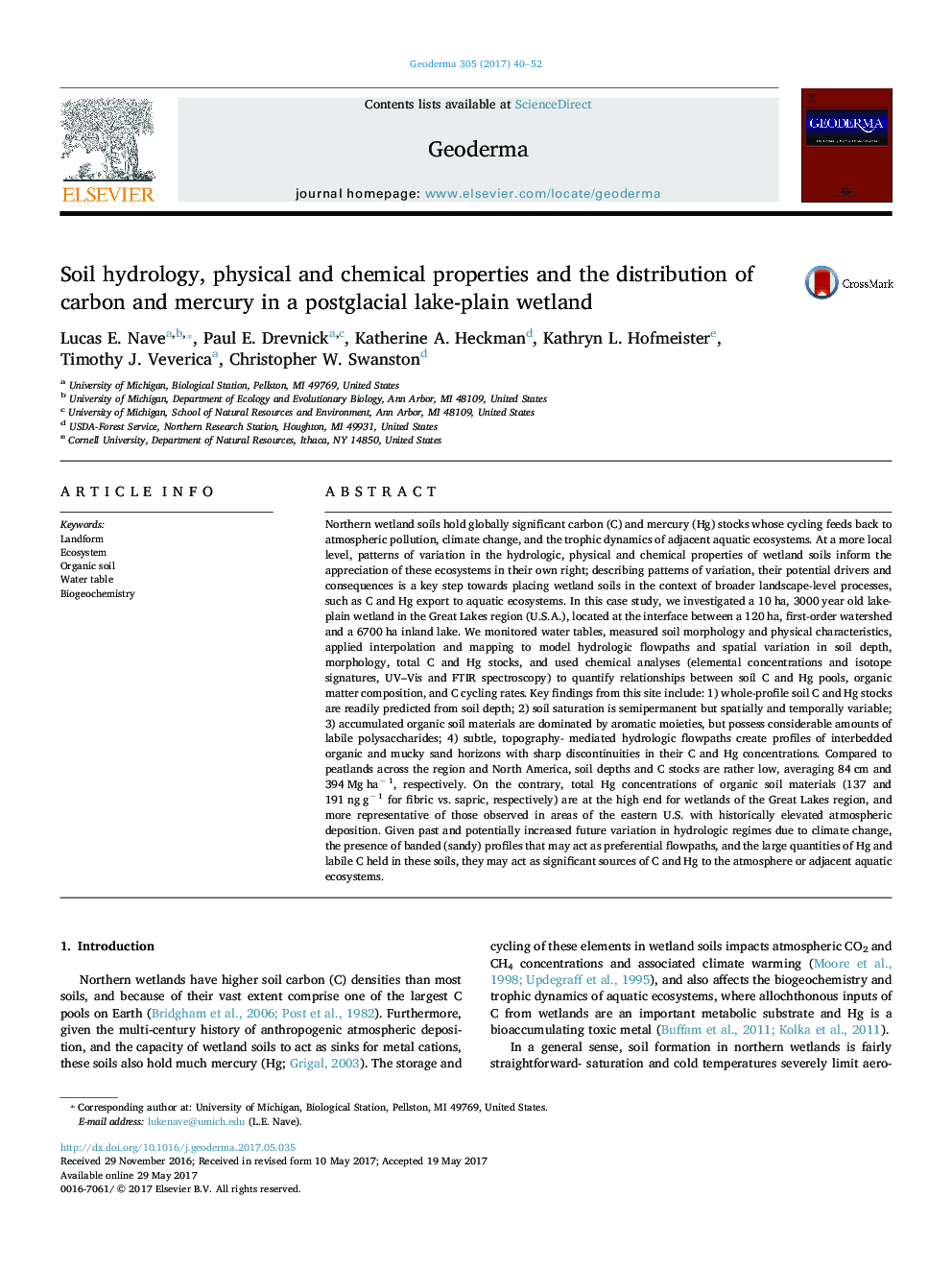| کد مقاله | کد نشریه | سال انتشار | مقاله انگلیسی | نسخه تمام متن |
|---|---|---|---|---|
| 5770274 | 1629412 | 2017 | 13 صفحه PDF | دانلود رایگان |
- Soil accumulation began concurrently with postglacial lake retreat ~Â 3000Â years ago.
- Soil C and Hg stocks are readily predicted from soil depth.
- Soil saturation is semipermanent but spatially and temporally variable.
- Soils are high in aromatic moieties, but contain labile polysaccharides as well.
- Topographic flowpaths create banded soils with variable C and Hg concentrations.
Northern wetland soils hold globally significant carbon (C) and mercury (Hg) stocks whose cycling feeds back to atmospheric pollution, climate change, and the trophic dynamics of adjacent aquatic ecosystems. At a more local level, patterns of variation in the hydrologic, physical and chemical properties of wetland soils inform the appreciation of these ecosystems in their own right; describing patterns of variation, their potential drivers and consequences is a key step towards placing wetland soils in the context of broader landscape-level processes, such as C and Hg export to aquatic ecosystems. In this case study, we investigated a 10 ha, 3000 year old lake-plain wetland in the Great Lakes region (U.S.A.), located at the interface between a 120 ha, first-order watershed and a 6700 ha inland lake. We monitored water tables, measured soil morphology and physical characteristics, applied interpolation and mapping to model hydrologic flowpaths and spatial variation in soil depth, morphology, total C and Hg stocks, and used chemical analyses (elemental concentrations and isotope signatures, UV-Vis and FTIR spectroscopy) to quantify relationships between soil C and Hg pools, organic matter composition, and C cycling rates. Key findings from this site include: 1) whole-profile soil C and Hg stocks are readily predicted from soil depth; 2) soil saturation is semipermanent but spatially and temporally variable; 3) accumulated organic soil materials are dominated by aromatic moieties, but possess considerable amounts of labile polysaccharides; 4) subtle, topography- mediated hydrologic flowpaths create profiles of interbedded organic and mucky sand horizons with sharp discontinuities in their C and Hg concentrations. Compared to peatlands across the region and North America, soil depths and C stocks are rather low, averaging 84 cm and 394 Mg haâ 1, respectively. On the contrary, total Hg concentrations of organic soil materials (137 and 191 ng gâ 1 for fibric vs. sapric, respectively) are at the high end for wetlands of the Great Lakes region, and more representative of those observed in areas of the eastern U.S. with historically elevated atmospheric deposition. Given past and potentially increased future variation in hydrologic regimes due to climate change, the presence of banded (sandy) profiles that may act as preferential flowpaths, and the large quantities of Hg and labile C held in these soils, they may act as significant sources of C and Hg to the atmosphere or adjacent aquatic ecosystems.
Journal: Geoderma - Volume 305, 1 November 2017, Pages 40-52
